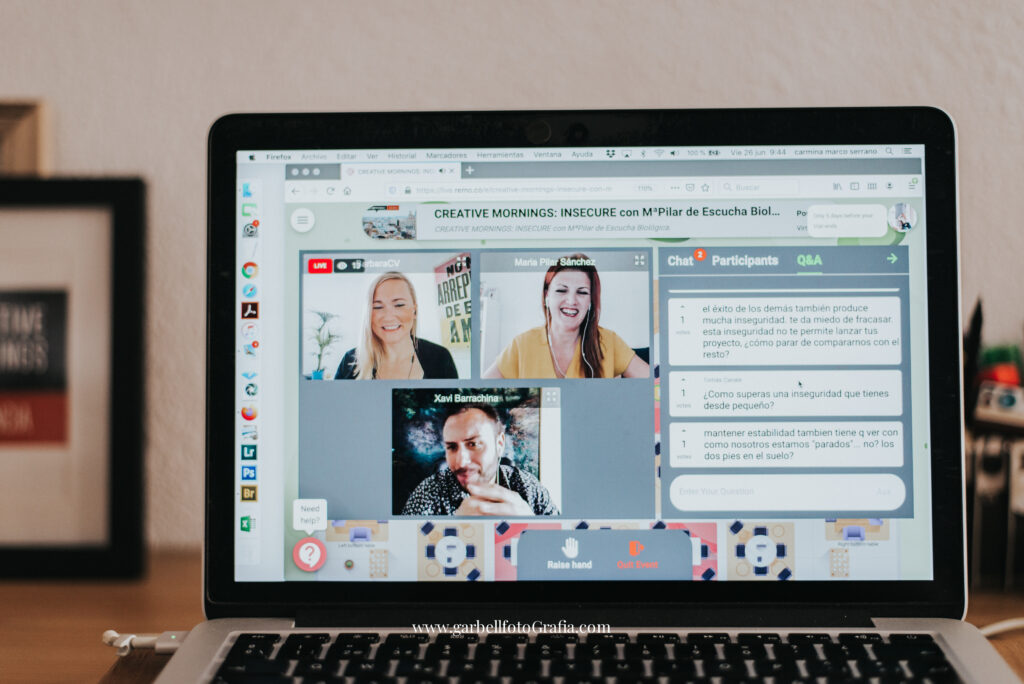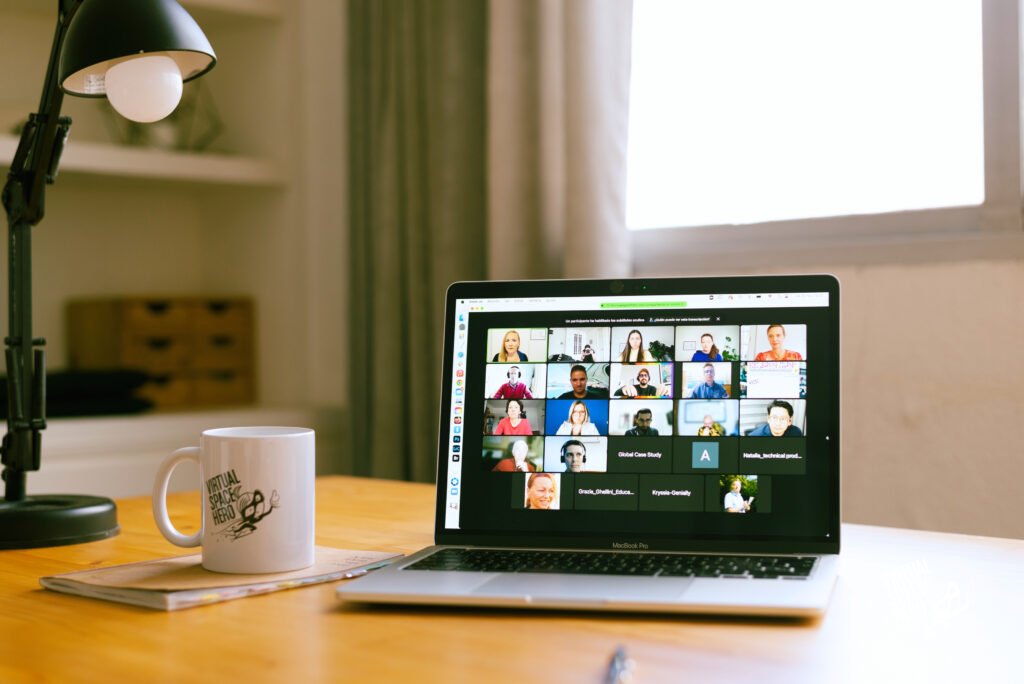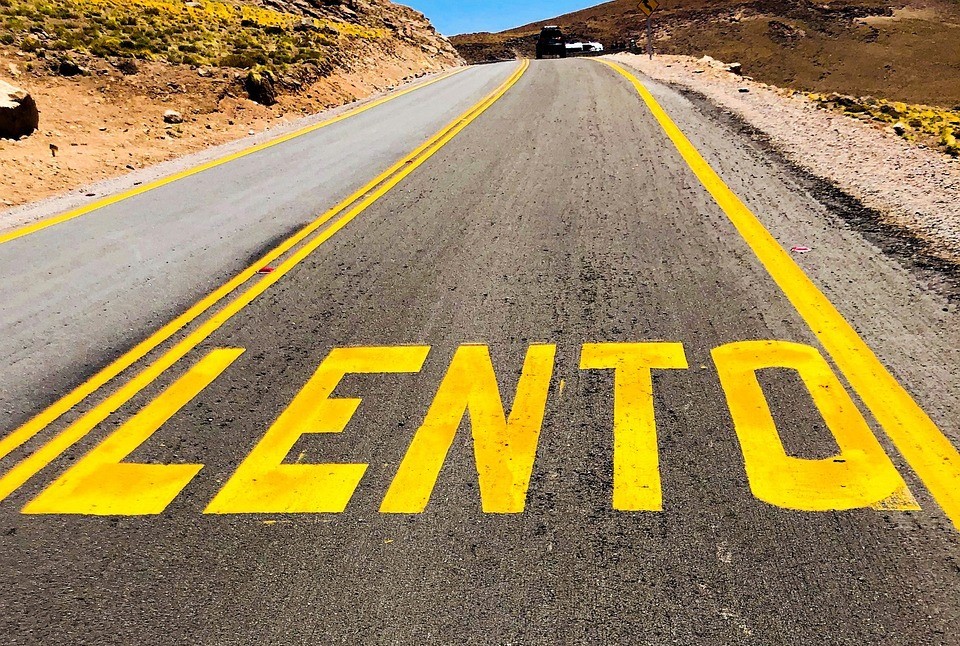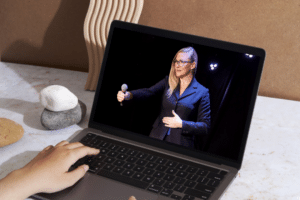written by Yasmin Kranewitter
As remote work gains popularity, many are blending remote work and slow travel. This trend has accelerated due to the pandemic and remote-friendly work policies. Balancing work and travel can be challenging and may lead to difficult situations. While this combination requires discipline and planning, there are ways to maximize your journey. This blog post will offer tips for optimizing your work-life balance while working remotely and traveling.
This blog article sums up the main points from a LinkedIn Live talk about how to optimise for remote work and slow travel. Featuring Chris Cerra (Creator of RemoteBase.co) and Barbara Covarrubias Venegas (Founder of #virtualspacehero).

Chris is…
📈 Top 50 Remote Enabler (Remote Influencer Report 2022, 2023)
📰 Media mentions in The Guardian, Forbes, The Washington Post, and more
🎧 Podcast appearances on About Abroad, That Remote Life, The Remote Show, Nomad University, and more.
Every month he shares the best long stay accommodation deals in a FREE email newsletter!
Join RemoteBase now: https://remotebase.co
Connect with Chris on LinkedIn here
ℹ️ What is Slow Travel?
Slow travel emphasizes taking time to deeply experience a destination and its culture. It allows travelers to intimately know the local people, food, and language. Unlike traditional tourism that aims to visit many places quickly, slow travel promotes in-depth exploration.
Options might include renting an apartment for a month instead of a short hotel stay, or enjoying a month-long trip over quick hops between cities. It encourages taking time to wander local streets rather than rushing through tourist spots.



4 Tips on Combining Remote Work And Slow Travel
Slow travel allows you to explore a destination at a relaxed pace, without feeling rushed. However, it’s crucial to stay committed and productive while working remotely. Here are four valuable tips for successfully combining remote work and slow travel.
1️⃣ Plan ahead
When traveling slowly, accommodation is crucial. Research various options to find a place that suits your needs and budget. RemoteBase is a newsletter that finds accommodation deals, saving you time and money.
For meetings, consider time differences among participants. Here are five tips to handle time zone challenges and ensure productive meetings with people from different regions:
👉 Be aware of participants’ time zones when organizing a meeting. Clearly communicate the meeting time in the organizer’s time zone. When sending reminders, include the time converted to each participant’s local time zone to avoid confusion.
👉 Calendar applications like Google Calendar or Microsoft Outlook typically feature built-in time zone converters. If those are not available, online tools such as Timeanddate.com can be used to easily determine the time difference between locations.
👉 Consider using scheduling tools like Calendly or Doodle. These tools let participants indicate their availability and automatically find the best meeting time. This takes into account everyone’s preferences and time zones, making it easier to schedule meetings for most participants.
👉 If you have recurring meetings with participants from various time zones, consider rotating the meeting time. This will evenly distribute the inconvenience of very early or very late meetings.
👉 Recognize that not everyone may be able to attend a meeting. Consider recording important meetings and sharing the recordings. Also, share relevant notes or documents with those who couldn’t attend.
2️⃣ Establish a routine
Before your trip, consider what your daily routine will look like at your destination. Establish a routine and schedule that suits you, then adhere to it. This approach helps you stay focused and productive, while also allocating time for relaxation. Consider these steps to set up a routine before you start your journey:
👉 Plan and prioritize: Make a list of tasks and activities you need to do while traveling and working. Identify essential tasks and prioritize them accordingly.
👉 Set clear goals: Define your goals for the trip, both professionally and personally. This will help you stay focused and motivated.
👉 Create a schedule: Have a daily or weekly schedule that outlines your working hours, breaks, and personal time. Consider factors like your energy levels, professional meetings, and planned leisure activities.
👉 Optimize your workspace: Select a workspace that clearly separates work from leisure. Choose a location where you can concentrate and have a stable internet connection. Suitable options include a co-working space, coffee shop, or a dedicated area in your accommodation. Ensure you have essential equipment like a laptop, chargers, and any specialized tools needed. Also, organize your digital files and ensure you have remote access to important documents.
👉 Define boundaries: Clearly communicate your availability and working hours to clients, colleagues, and team members. Set boundaries to avoid overworking and maintain a healthy work-life balance. After all, you want to enjoy your time abroad and not spend all of it on meetings and work.
👉 Stay flexible: While it is crucial to have a basic routine, be open to adapting it if necessary. Embrace the unique experiences and opportunities that arise during your travel, while also staying focused on your work.
By preparing your remote work and slow travel in advance, you can establish a routine. This promotes productivity, work-life balance, and a smooth transition into your travel and work adventure.
3️⃣ Invest in your workplace setup
Your tools significantly impact your efficiency and comfort when it comes to remote work and slow travel. Invest in a portable work setup, including a monitor and keyboard, to maintain productivity. Use communication tools like Slack or Zoom to keep up collaboration and keep your team updated.
A crucial aspect of successfully combining remote work and slow travel is your internet connection. Before traveling, confirm you’ll have reliable internet that supports activities like video calls. If your accommodation lacks WiFi, consider a mobile plan with hotspot options. Research internet speed and connectivity at your destination before leaving.
4️⃣ Enjoy
When deadlines are approaching and stress levels are high, it can be tempting to spend all your time working. Ignoring the beauty your destination has to offer can be a mistake. One way to ensure you also take time off is to treat workdays as if you were in an office. This means setting a start and stop time, taking breaks, and avoiding distractions. By setting these boundaries, you will be able to better balance work and travel.
Finally, it is important to make the most of your downtime. Traveling is a great opportunity to explore a new city or culture. It is also a chance to take a break from work. This means taking time to relax, recharge, and enjoy your surroundings. Whether it is visiting a museum, trying the local cuisine, or taking a day trip, spend your time off with something you enjoy. This will help you stay motivated and focused when you are working. Taking a few days off after arriving can help you overcome potential jet lag and settle in. This will make your trip more enjoyable and provide you with a better understanding of your destination.

In conclusion, remote work has revolutionized our approach to careers and provided unprecedented flexibility and freedom. The ability to work from anywhere has eliminated geographical barriers. It has also allowed individuals to strike a healthier work-life balance. Remote work has increased productivity and job satisfaction. Employees have the autonomy to create their ideal work environment. They can tailor their schedules to their personal needs. It has opened opportunities for people to pursue their passions. They can spend more time with their families or explore new horizons. This is possible while still fulfilling their responsibilities to employers. With advancements in technology and growing acceptance of remote work, this trend is here to stay. It will continue to shape the future of work.
Slow travel offers a refreshing antidote to the fast-paced trend of short weekend getaways. Instead of rushing through destinations and exploring them superficially, slow travel embraces a more intentional experience. This allows travelers to truly immerse themselves in the local culture. They can connect with people and gain a deeper appreciation for their environment. Slow travel encourages mindfulness, letting travelers savor each moment and experience new perspectives. This fosters personal growth, expands horizons, and enriches the overall travel experience. It encourages individuals to prioritize quality over quantity. This approach reduces the environmental impact of travel. It also supports local economies and promotes sustainable tourism practices.
Both remote work and slow travel promote flexibility, freedom, and a balanced way of living. They offer opportunities to reshape our work and travel habits. This enables us to live more fulfilling lives while contributing positively to the world around us. Travelling and working remotely can be challenging. However, with the right tools and mindset, it can also be extremely rewarding. By combining the benefits of remote work with the mindset of slow travel, we can create a better future. This future embraces personal well-being and a sustainable approach to living and exploring the world while pursuing your career.




